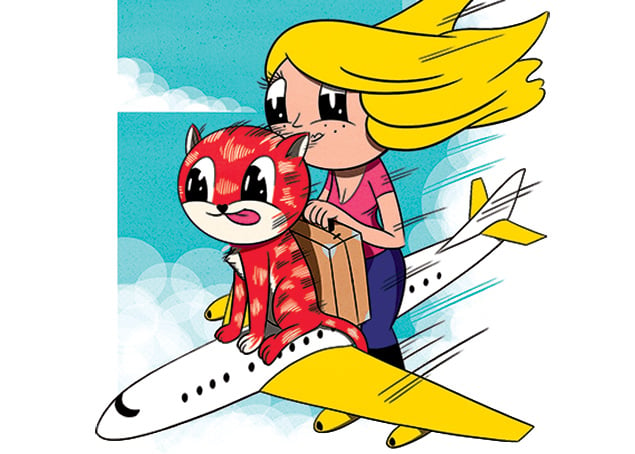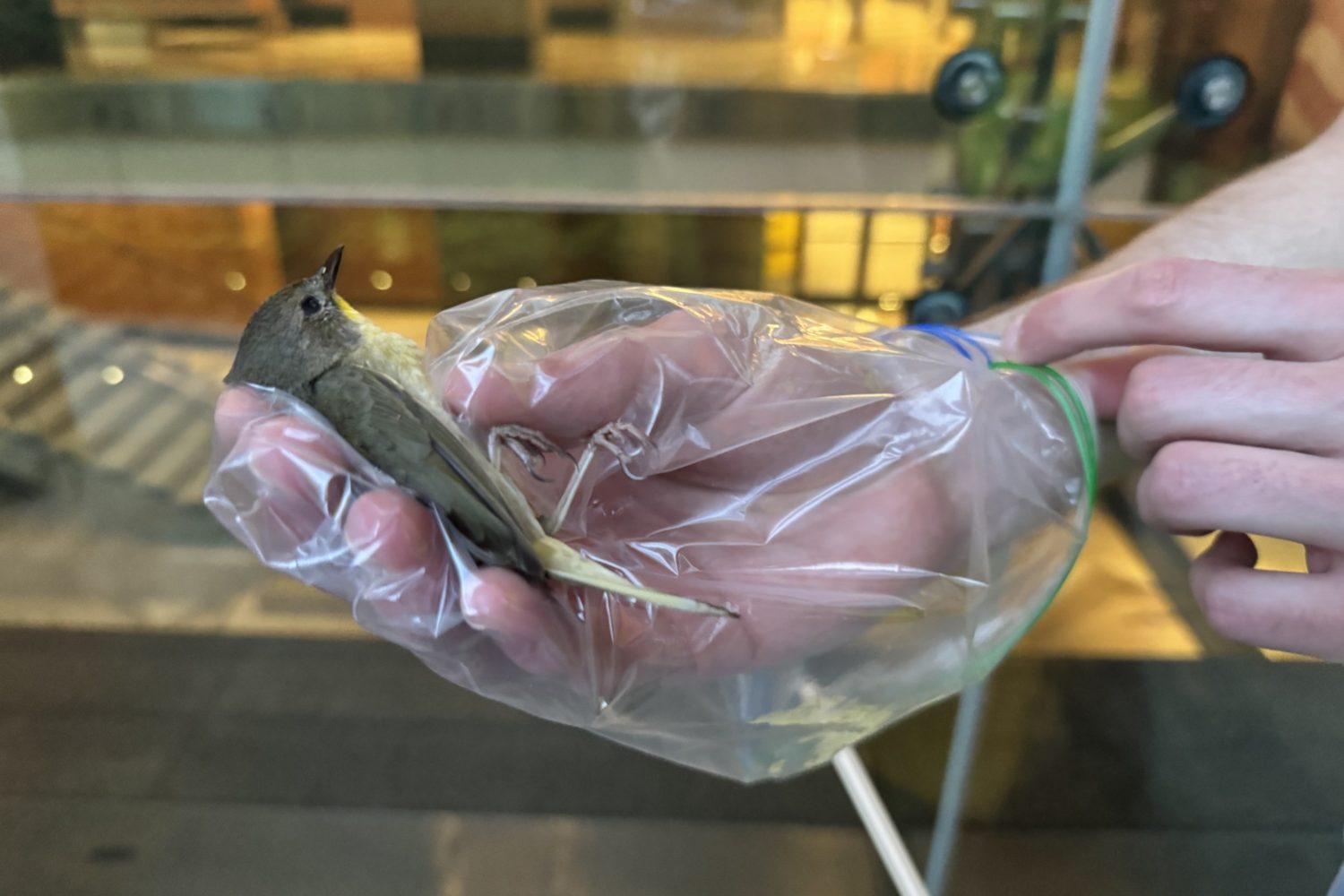From booking a hotel to finding a neighbor to water your plants, summer’s travel checklist is daunting.
But for pet owners, there’s even more to consider—most important, whether to bring four-legged family members along for the trip.
Owners must grapple with the guilt of excluding beloved pets from the fun, versus the stress of stowing them for hours under an airplane seat or in the cargo area. It can seem like an impossible dilemma.
For Emma Poon of Silver Spring, reaching the decision to fly with her cat, Milo, was a process. She started by bringing the orange tabby on road trips to see how he’d react to riding in a moving vehicle. He first looked out the passenger-side window to get his bearings, then eventually lay down calmly. When he successfully made a car trip all the way from Montana to California, Poon knew she could trust him on a plane.
Experts say pet parents should follow her example by carefully assessing the temperament of their animals before making the final call. Alexandra Dilley, behavior-and-training director at the Washington Animal Rescue League, says “quiet cats and dogs that are at ease in new situations” are likely safe bets to take with you. She warns that cats are generally more sensitive to changes in their environment and therefore less amenable to travel. Dilley discourages taking any animal, no matter how well behaved, on flights longer than six hours.
Airlines differ in their policies. Poon prefers Southwest because passengers select their seats when they board, allowing her to scope out the optimal spot for Milo: an aisle seat, in the least crowded part of the cabin. The industry standard is generally that dogs and cats must be eight weeks old to fly and, to ride in the cabin, must fit comfortably in a carrier that can be stowed under the seat.
Some airlines, including Southwest, don’t allow pets in the cargo area. For those that do, you need a certificate from a vet ensuring that your animal is in good health. Some don’t permit pets in cargo when it’s above or below a certain temperature outside.
While sedatives can be used as a last resort, they’re not recommended because they dull pets’ reactions. If the plane hits turbulence, a sedated animal might not brace itself in time and could become injured. Veterinarian Sarah Bowman, co-owner of CityPaws Animal Hospital in DC’s Logan Circle, instead suggests giving pets trial runs in their carriers to help prevent any anxiety about being confined on travel day.
Owners who leave pets behind can take precautions to ensure they’re properly cared for. Bowman says families who have a pet sitter at home must remember to leave a signed note giving the sitter consent to make medical decisions for the animals in an emergency.
When researching boarding facilities, it’s important to note whether they have separate dog and cat areas to prevent stress, says Ellen Carozza, a veterinary technician at NOVA Cat Clinic in Arlington. Owners should visit kennels in advance, and staff should offer a tour—hesitation to do so is a red flag. Carozza advises asking how often the animals get playtime with people and how frequently accommodations are cleaned.
Whatever an owner decides, one thing is certain: There’s no place like home. Milo, now ten years old, has been on about ten flights, including to Chicago, Los Angeles, and Florida. The cat follows the same ritual every time he returns from a trip, running straight from his carrier to his food bowl, happy to be back where he belongs.
Editorial intern Priscilla Alvarez (palvarez@washingtonian.com) has flown with her dog to Panama and Mexico City. This article appears in the August 2014 issue of Washingtonian.


















